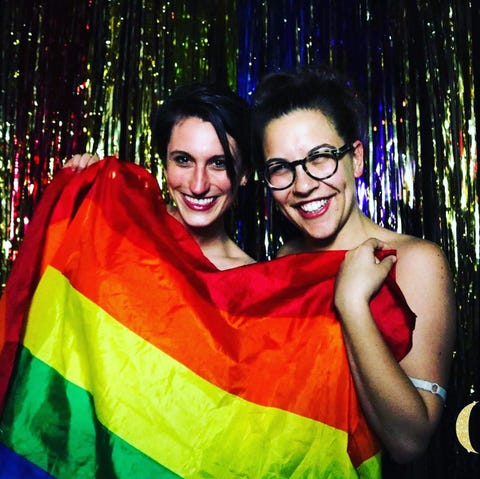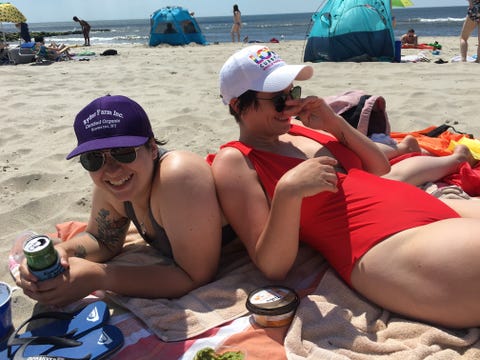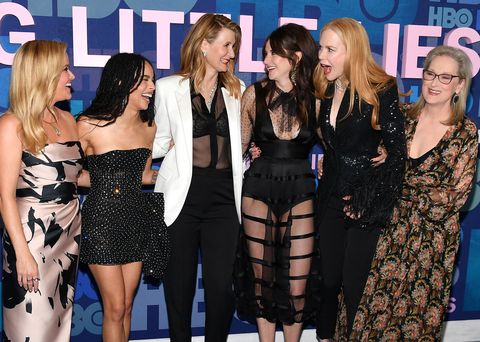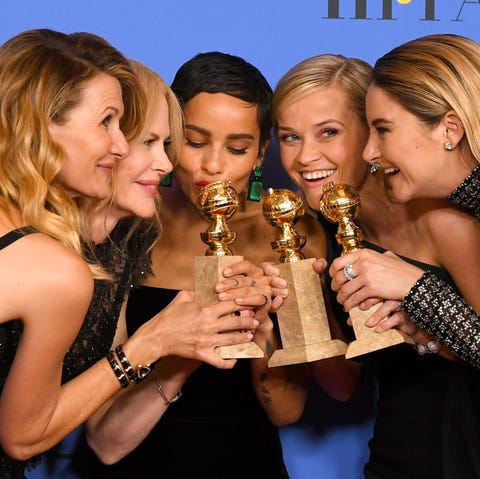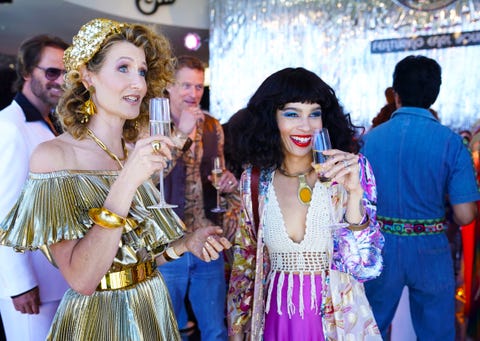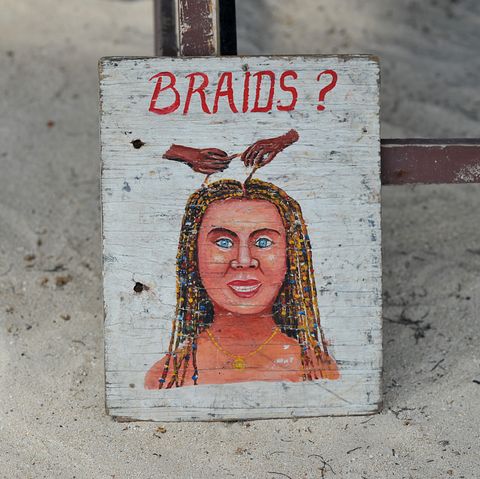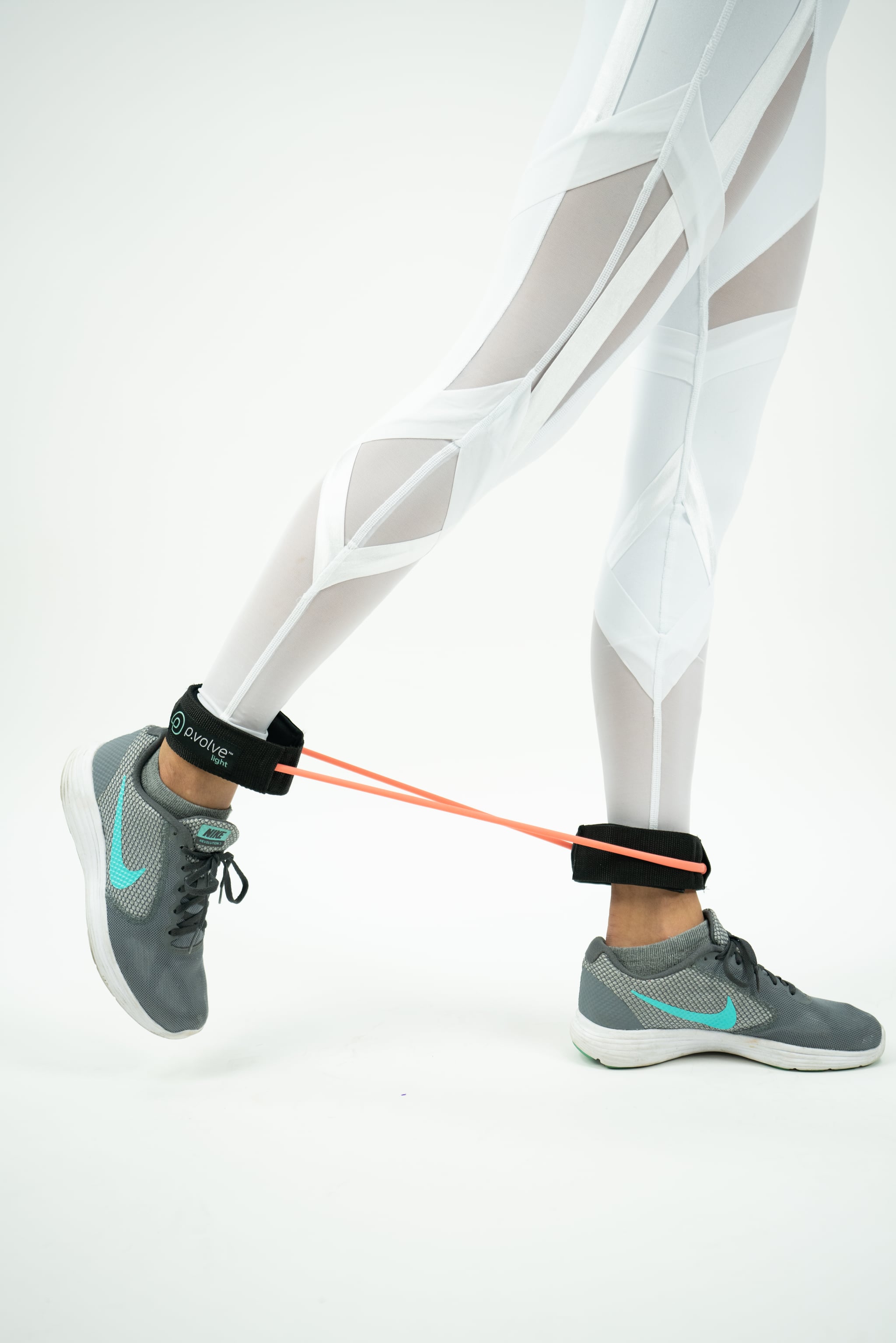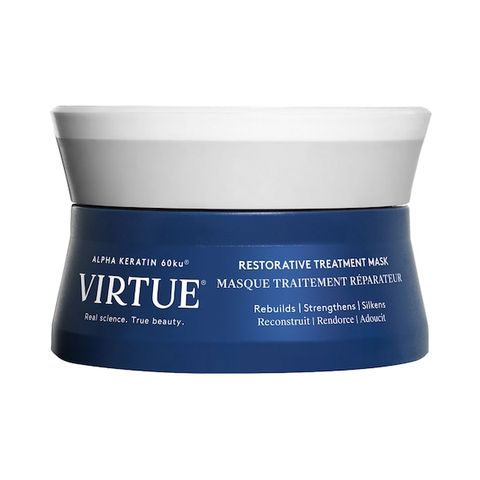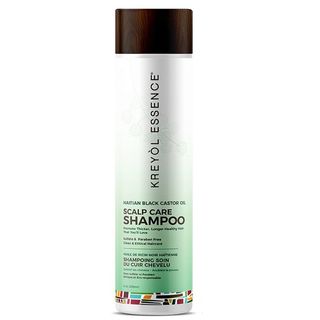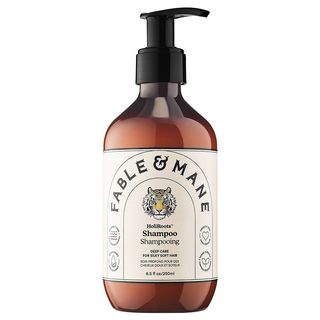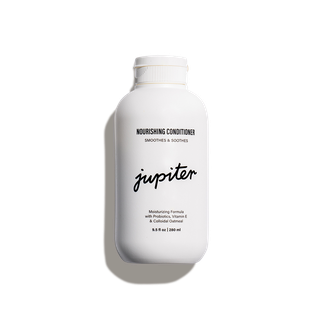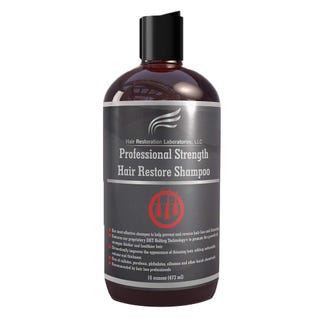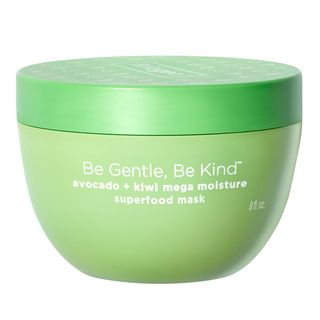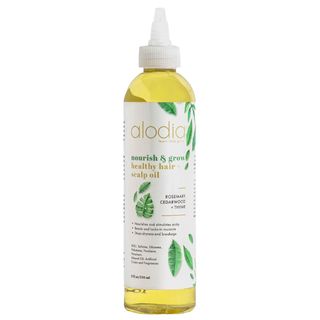What was the last beauty product you bought? Why did you buy it? Maybe it was for its sustainable packaging or because of a particular ingredient. We’re becoming more intentional with our buying habits and as consumers, our purchasing power has an impact. This is important because beauty is a multi-billion-dollar business with the global beauty industry worth over $500 billion USD, but it’s not an easy one to break into or thrive in. This is especially true for small, BIPOC-owned beauty brands who face particular challenges on the daily, whether they’re competing against beauty behemoths or facing obstacles in areas like product development and funding.
Recently, Toronto-born designer Aurora James of Brooklyn-based accessories label Brother Vellies launched the Canadian extension of the Fifteen Percent Pledge, urging retailers to dedicate shelf space to BIPOC-owned brands. It’s not an unreasonable ask, nor should the retailers be left wanting for choice. After all, Canada is home to many BIPOC-owned beauty brands (and BIPOC residents—approximately 3% are Black, 5% are Indigenous and 22% are visible minorities according to the 2016 census). But accountability doesn’t just end with retailers. We need to re-examine our own purchasing power, diversify our top shelves, and offer ongoing and long-term support to homegrown brands that are right in our own backyard. In that spirit, we spoke with the founders of five Canadian BIPOC-owned beauty brands about what inspired them to start, the challenges of running a small business and the changes they’d like to see in the beauty industry.
Read this next: 6 Canadian Drag Performers Tell Us How They Take Care of Their Skin

Temi Shobowale, founder of Essentials by Temi (Photo: Gillian Mapp)
Essentials by Temi
Buttery balms and glow-boosting oils are mainstays in Temi Shobowale’s skincare line. When the Toronto-based makeup artist launched Essentials by Temi last year, she wanted to bring her own Nigerian culture to beauty while also going back to the basics by using things in nature that were free from toxins and harmful chemicals. Shobowale soon went from making DIY body butters for her workshops with HERDay—a community of local events founded by her to unite and uplift women—to creating a line of luxe organic and vegan skincare products that are good for the skin *and* soul.
When you started Essentials by Temi, what was the void you were seeing in beauty that you wanted to address or fill?
I wasn’t seeing a lot of Black-owned skincare brands. In my community, Black people are ready to drop money for skincare or beauty but we’ve never gotten support that we’ve needed in order to launch. No one would come to us and say, ‘Hey, come launch your own skincare brand!’ It’s only in recent years that you’ve seen a surge in Black-owned entrepreneurs. There’s been this gap so long. It’s not like we didn’t want to do it. We never got the opportunities to do it. We need things that are catered to us.
What was the process of building your brand? What were some of the challenges?
There were a lot of challenges. I was trying to find Black cosmetic chemists. Every chemist I came across or esthetician I wanted to speak with to test the product and get their feedback—it was hard to find people of colour and Black women in these roles. Do we exist in this industry or are we just not getting the opportunities? Even looking for insurance [was challenging]. When you don’t have the financial backing or support to do those things, there are so many obstacles in the way of trying to build a brand. That’s what happens to small, indie, Black-owned brands—they never really get the support they need and the financial aspects hold them back from shooting for the stars and doing what they need to do to get their brand and name out there.
When you first started Essentials by Temi, you promised yourself that you’d use as much fair trade ingredients as you could source. Why was that so important for you?
I’ve always been political and a social activist with everything that I do. When people are sourcing ingredients, there’s always a middle man. Even coming from a West African country like Nigeria and Ghana, you have shea butter, but how is the shea butter being transferred here? A lot of the times [people are] being overworked and not being paid enough for what they’re doing. I’m big on energy. I don’t want to make products or be involved with anything like that. Fair trade isn’t just about people getting paid fairly, but also enjoying their jobs. It was really hard finding places and suppliers who provided that. The only way I was able to go about it was to go with a big supplier that was a bit [more] transparent about it, but when they’re bigger and more transparent, they’re more expensive. I’d rather pay more so I know where it came from.
When you were deciding on the brand’s visual identity, what did you want to see?
I always knew I was going to involve my friends in it. Being in an industry where I’m constantly working with models, there’s always a certain type and a look—I didn’t want to have a brand like that. I wanted a brand that was for all.
What changes do you want to see in the beauty industry?
I would like to see quality ingredients and worry less about packaging. I get irritated with brands that have boxes for their products. I understand that it’s being protected when you have to send it to certain places. We just don’t need extra waste. If it’s not reusable, what’s the point of having it? I want to be a package-free luxury brand.

Michelle Lui and Fatemah Hamidi, co-founders of MIFA & Co. (Photo: Courtesy of MIFA & Co.)
MIFA & Co.
In late 2017, Michelle Lui and Fatemah Hamidi left their corporate gigs to start their own business. The two friends had always bonded over beauty. The idea for Vancouver-based brand MIFA & Co. (“MIFA” is an amalgamation of their first names) was conceived right in Hamidi’s kitchen where she’d make her own soap bars. After perfecting the recipe over two years, the friends and business partners launched the brand with two signature soaps. Today, the line-up has expanded to include a mist and body wash made with zen-inducing essential oils like eucalyptus and lavender.
What inspired you to create MIFA & Co.?
Coming from corporate backgrounds—and being a mom myself—we knew the importance of self-care and connecting with ourselves. We wanted to create products that inspired people to do just that, but also make sure their self-care rituals were completely safe and therapeutic for the body. Our mission is to promote self-love through the evolution of self-awareness and practice of self-care, and we want our collection of products to consistently deliver a healing, restorative experience to each of our customers. We believe that what you put on your skin is as important as how you feel in your skin, and that often those two things are mutually exclusive.
Both of you left your corporate careers to launch your own brand. What was the transition like?
It was a little scary at first leaving our management positions—after working eight years together in the same office in marketing and finance—and walking into the unknown, but we believed in our product and had the passion towards living a more natural lifestyle. We knew that we had to give it our all so we just went all in. Having the corporate background did help a lot in terms of starting the business and implementing processes in how we do things, but we’ve definitely had our fair share of challenges, much like any entrepreneur!
What distinguishes MIFA & Co. from other brands in the beauty and wellness space?
We believe that products should perform, but they don’t need to be overly complicated. We wanted to create a modern brand that was 100% natural with high-quality ingredients and luxurious at an affordable price point because accessibility to wellness is important to us. All our products are formulated and made in Canada, 100% natural and made with zero fillers, fragrances, toxins and synthetics. They are also vegan, plant-based and cruelty-free.
What were some of the hurdles of launching a beauty brand?
One of the first hurdles we encountered was finding a manufacturer to grow our company with. It was important to us to find a manufacturer that was in Canada, but also one that believed in our vision and aligned with our values of being 100% natural.. Being an indie brand that’s self-funded, we really have to be careful on where we’re spending our money. The hurdles definitely don’t stop coming as we grow the business—the mistakes just become more expensive—and to be honest, I wouldn’t have it any other way.
The brand uses botanical oils and plant butters. What is the process like of sourcing these ingredients and finding the ones that work best?
It takes us over a year to develop our products as we ensure we’re not only sourcing the highest quality ingredients but also creating the most effective formulation. We create all our products making sure not only that we source the highest quality ingredients but also oils that are sustainable. We work with a group of scientists that specialize in natural skincare and they each come from different backgrounds. They help us identify synergies and the effectiveness of our ingredients when combined to deliver simple yet effective products.
Read this next: This Indigenous Skincare Brand Blends Science and Squamish Traditions

Francine Bahati, founder of Queenfidence Cosmetics (Photo: Courtesy of Queenfidence Cosmetics)
Queenfidence Cosmetics
In 2012, Francine Bahati moved with her family to Winnipeg from Uganda where she lived for ten years after fleeing the Democratic Republic of Congo due to civil war. After coming to Canada, Bahati set out to realize a dream that would bring together her love of beauty with her desire to make a meaningful difference. In December 2017, she launched Queenfidence Cosmetics, an inclusive line of colour cosmetics catering to all skin tones, starting with five paraben-, vegan- and gluten-free matte liquid lipsticks. The beauty-loving entrepreneur is also responsible for Black Owned Business MB, an Instagram account that highlights Black-owned businesses and professionals in Manitoba.
Your personal experiences really inform your love of beauty. What led up to you starting your brand?
I believe that makeup is a powerful tool you can utilize to inspire people and remind them to be confident and fearless. I always say that Queenfidence is more than just a brand. It’s our commitment to be able to empower women. It’s for people to look at Queenfidence and find themselves and be reminded how awesome they are, how beautiful they are inside and out and know that makeup is meant to enhance what you already have.
What were some of your earliest beauty memories?
As a young child, I loved makeup. I used to see my mom playing with makeup and she inspired me. In Uganda, we didn’t have money. I would improvise and use charcoal as powder and palm oil as lip gloss because I loved how it made me feel. In that moment, I realized that I would love to do something to do with the special connection I have with makeup. Growing up, I realized that so many girls use it for the wrong reasons, like [to] define who they are or cover who we are. If you feel beautiful inside, makeup is just icing on the cake.
The name of your brand has a lot of personal significance. What does it represent?
Growing up, I had low self-esteem. I never believed in myself. I never thought I would amount to anything. Being a refugee in Uganda and how people used to look down on us because of the life we used to have affected how I looked at myself. In that moment, I knew I had so much inside of me to give. How could I use my journey and struggle to inspire others? So many women suffer from self-confidence [issues] and let past mistakes define who they are. Queenfidence is to remind people never to let your past mistakes and struggles define who you are.
What are your thoughts on the current beauty landscape in terms of diversity?
In the last two or three years, I think most corporate brands have stepped up with inclusion and diversity to include other colours and not exclude skin tones. Of course, there’s work that has to be done and [all] skin has to be represented. I think something is still missing in drugstores. I shop a lot at drugstores. When I go there, I don’t find foundations that go with my skin tone.
What have been some of the challenges of having your own beauty brand?
Not only [are we] an indie brand, but [we’re] a Black-owned indie brand in Canada. I love going to trade shows so I can connect with my customers on a deeper level and get to see who is behind the brand. I’ll apply to local markets here in Winnipeg and they’ll reject me. I’ll send an email because they don’t know who’s sending this email. Once they do research on me, they reject me. They don’t have any makeup [brands] in the market so why would they reject me?
My dream is to go into big retail stores. I’ve sent emails to different buyers and had them tell me it’s not the right time. With rejection, it’s hard to bounce back sometimes. The right opportunity will come along again. Funding is another [challenge]. I’ve been self-funding since I started. When you want to release a product in a particular season, you might not have enough funds to release everything at once. Something that has always given me purpose since I started the brand is seeing how people react and love the product. When I see someone wearing Queenfidence, it’s like I’ve won something big because I know where I come from.

Jennifer Harper, founder of Cheekbone Beauty (Photo: Courtesy of Cheekbone Beauty)
Cheekbone Beauty
Cheekbone Beauty has been dedicated to empowering Indigenous youth since it first launched in 2016. Founder Jennifer Harper first conceived the idea for the brand in a dream in which she saw a young native Canadian girl wearing lip gloss. Inspired by her Anishinaabe roots, Cheekbone Beauty’s line of lipsticks, glosses, brow products and contour kits embody Harper’s “do good, feel good” ethos. She’s also on a mission to make the St. Catharines-based business more sustainable, and innovation is key—in March, the brand launched a collection of lipsticks with biodegradable packaging and sustainably sourced ingredients. This summer, it’ll release a refillable palette box made with biodegradable paper, and also has makeup sticks coming down the pipeline that are made from agricultural waste and can be used as a foundation, contour or highlighter.
You first launched Cheekbone Beauty in 2016. Was there Indigenous representation in the beauty industry when you first started?
There were a couple of online brands that were trying to use social media [to connect with customers.] What I’m learning is that it’s really about understanding how powerful a tool it is and building [the brand] out using more tools that are available to us in this day and age. When I started, it looked like they were perhaps makeup artists [saying], ‘I can make a brand’ because there are a bazillion makeup manufacturers out there. That was in my initial research. You could see that they were trying but it wasn’t as big as I know it had the power to be.
Cheekbone Beauty is a socially conscious brand and gives back to the community. Why is that important to you?
The products were secondary in the beginning and still kind of are. Our first and foremost goal is being a platform for representation that’s been missing in big beauty. No one has focused on Indigenous spaces. Our intention from the beginning is to be a global brand and do whatever it takes to make that happen. I want our Indigenous kids to be really proud of who they are and where they come from. They can realize that they have the potential to build something like that as well.
Your goal is to make Cheekbone Beauty more sustainable and be zero waste by 2023. What has that journey been like?
I feel a lot more comfortable being on this journey now as the leader of the brand saying, ‘Okay we’re trying this route for packaging or we’re using these raw ingredients because this is the most innovative raw supplier we could find at this moment.’ When we find an organization or business working on that, we want to be there to support whatever innovation they’re creating. As a brand, we are also interested in working on our own innovations. Our community has been super gracious and understanding that we’re doing what we can afford to do. I’d love to do a massive overhaul but I’m still a one-woman leader.
The Warrior Women liquid lipstick collection is named after strong Indigenous women. What inspired the idea?
It all came from our vision and mission, which is helping every Indigenous kid in the world see their enormous value. One way we thought of helping them down the path of seeing themselves was showing them role models. Here are 21 women, historically and presently, who have paved the way and done amazing things across all industries that [Indigenous youth] might like to do or see themselves doing. They’re also powerfully pigmented liquids because everything we do here as a brand has so much thought that goes into what we stand with and stand behind.
You shared your disappointment about big beauty brands not acknowledging National Indigenous Peoples Day on social media. Can you tell more more about that?
I was actually shocked. Indie brands pay more attention [to things like National Indigenous Peoples Day] and are seeing success [because of it]. If anything, all that I, personally and as a brand, want to come out of that is for big beauty brands to remember National Indigenous Peoples Day next year. They likely don’t have any Indigenous people in any of their upper management or leadership boards so who’s helping them think about that? Not only are Indigenous people paying attention, but also our Indigenous allies across North America, an arena that’s filling up with people who want to support our communities. They’ve seen, witnessed and now know the truth about our history and they’ve seen what we have had to overcome to find a measure of success and happiness after all the trauma we’ve all been through.
Read this next: As a Black Woman, Doing My Hair Has Been Helping Me Cope

Edwina Govindsamy and Ariel Gough, co-founders of Bailly Fragrance (Photo: David Divine Photography)
Bailly Fragrance
Ariel Gough and Edwina Govindsamy first met during what they jokingly refer to as an “adult playdate” set up by Govindsamy’s mom. The pair hit it off right away and eventually decided to start a business together. After brainstorming a laundry list of ideas (everything from mugs to wireless charging stations), they settled on fragrance. In 2018, they launched Bailly Fragrance, a collection of coconut-based perfume oils that are vegan and hypoallergenic with scents like Resilience, a sweet gourmand with notes of blackcurrant, patchouli and tonka bean. All products are manufactured in their hometown of Halifax with $5 from every purchase from their Girl Power collection going towards the Just Like My Child Foundation’s Girl Power Project.
As you started to learn more about the fragrance industry, was there a gap or void that you wanted to address?
The conversation around fragrance, specifically here in Halifax and in Canada, is very negative, with a lot of places having very strict scent policies. But scent is such a powerful sensory experience. We really saw an opportunity to change that narrative and make perfume as exciting as makeup and skincare, and also offer a safer alternative. There was also a lack of education around fragrances and fragrance ingredients, so people really didn’t know what kind of options were out there. Even though clean fragrances weren’t an entirely new thing when we launched in 2018, it was very new to a lot of people. Talking to them about what safe ingredients were, what clean fragrance was, and even the difference between a perfume oil and an alcohol-based perfume was all completely new.
What inspired you to launch perfume oils?
People are sensitive to fragrances. We found that alcohol was the number one complaint. A lot of people found that the ingredient gave them the headaches that are most commonly associated with fragrance. Going with an oil-based perfume makes our scents a lot more subtle and less irritating for those people. It also lasts longer than your typical alcohol-based perfume. You’ll typically get three to four hours of wear out of an alcohol-based perfume, whereas with an oil-based fragrance, you get about six to eight hours.

Brilliance 10mL Roll-On Perfume Oil, $30, bailly.co
The brand’s pillars are authenticity, empowerment, inclusivity, and impact. How do they represent the brand?
We want people to look at our brand and see themselves, either doing something similar or being inspired by our journey. If you look on our Instagram, we’ve shared a lot of our story about how we met and why we chose the fragrances that we did. We want people to feel a part of building the brand in an authentic way. We also found that there was a conversation to be had within the fragrance industry about advertising, especially women’s fragrances. When we see a woman riding on a horse in a dress, it’s very much fantasy. We want our brand to be more empowering and for people to wear our scents during the most important moments in life. We want it to be a part of their reality. We also wanted to make an impact in the broader community and we do that by donating a portion of our profits to a foundation in Uganda. And then of course inclusivity because we want to see more representation in the industry.
The fragrance industry is known to have many trade secrets and, as a result, there’s a lack of transparency. What are some ways that you encountered that?
We found that there were scents and different vendors that we absolutely loved that when we tried to get formulations and really dive into the ingredients, it was one of the huge red flags that we saw right from the beginning. A lot of people weren’t or didn’t want to disclose what they were using because of the proprietary nature of the industry.
What ways do you think the fragrance industry needs to change or do better?
The sexualization around women in perfume advertising, as well as transparency.








